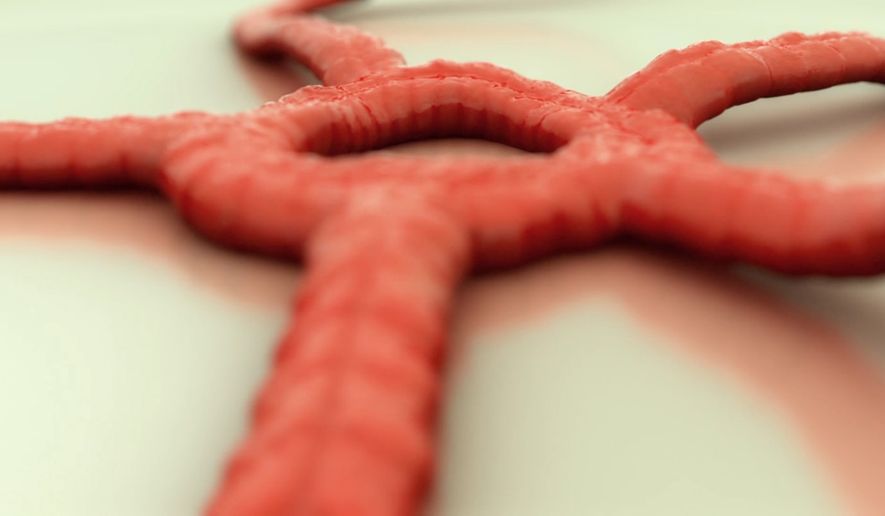PITTSBURGH — Earlier this month, I was invited to a restaurant opening, which wasn’t remarkable except that it was for Bistro In Vitro, the “world’s first lab-grown meat restaurant.”
I was very intrigued, which is what the organizers want me and other people to be.
Lab-grown meat?
“What lab-grown meat tastes like is hard to imagine,” teased my initial invite, which didn’t even say where the bistro is located. But I was pretty sure that it is in the Netherlands, and I was pretty sure it’s not quite yet serving food, but rather, food for thought.
I had a chance to report on the subject of “test-tube burgers” from the 2012 meeting of the American Association for the Advancement of Science in Vancouver, Canada. (See my Feb. 23, 2012, story, “Is ’In Vitro Meat’ Moving Closer to the Menu?”) One of the “Meat without Animals” panelists was Mark J. Post, a professor at Maastricht University, where he already was growing cow stem cells into tiny strands of meat that he and colleagues planned to cook and eat as the world’s first tissue-engineered burger.
They cooked and tasted that burger (which cost more than $330,000) at a media event in London in August 2013.
The May 6 opening of Bistro In Vitro looks to be a bit of a media stunt, too.
A reply to my email inquiry elaborated that it’s an “interactive restaurant” that will have its “online premiere” next week in Amsterdam. Publicity manager Corinne Elias promised to send me more details closer to the event.
I made a reservation for my seat and tried to find out more.
Apparently, Bistro In Vitro — bistro-invitro.com — is co-run by the Next Nature Network, a Dutch think- and design tank that “explores how our technological environment becomes so omnipresent, complex, intimate and autonomous that it becomes a nature of its own.” (Its director, Koert van Mensvoort, also runs the Next Nature Lab at Eindhoven University of Technology.)
One of Next Nature’s themes is the issue of how to feed mankind’s ever-rising hunger for meat, which is such a strain on the Earth’s resources, many people’s ethical beliefs and, of course, the animals themselves. In exploring questions such as, “Is there a humane, eco-friendly way to get our protein fix?” the group has launched projects including a crowd-funded “In Vitro Meat Cookbook.”
The book was described as a “visually stunning exploration of the new ’food cultures’ lab-grown meat might create. This book approaches lab-grown meat not just from a design and engineering perspective, but also from a societal and ethical one. What will holiday dinners look like if in vitro meat replaces turkey? Would you eat meat grown from your own stem cells? Is lab-grown meat kosher? Or vegetarian?”
Fanciful recipes included everything from revived dodo wings to meat ice cream, which the group at one point served from an actual in vitro meat ice cream cart — in beef, bacon and faux-polar bear flavors.
Gross? Mr. Van Mensvoort acknowledges in the foreword that some of the recipes are “macabre.” Next Nature acknowledges that lab-made meat can be off-putting, and it proclaims to be neither for nor against it, but rather, to be trying to help mankind figure it out.
It looks like Bistro In Vitro is its next invitation to put the issue(s) on the table, so to speak, for people to chew on.
Plenty of people are interested — and working on a variety of engineered meat and meat alternatives (People for Ethical Treatment of Animals offered a $1 million prize to whomever came up with the first in vitro chicken, but nobody beat the March 2014 deadline). Mr. Post of Maastricht University, at an Australia cattle ranchers event earlier this spring, said that he believes lab-grown meat could be a viable industry in 20 to 30 years.
Serious stuff, but Bistro In Vitro isn’t all serious about it. A press release notes that the bistro is moving “beyond in vitro meat as inferior fake-meat replacement and … exploring its creative prospects.”
Accompanying photos depict menu items Knitted Meat, In Vitro Oysters, See-Through Sashimi and Liquid Turducken, “a meat-based riff on the classic White Russian cocktail (that) combines turkey, duck and chicken into a hearty drink that’s practically a meal in itself.”
The full menu will go live next Thursday when the online “restaurant” opens, full of people talking about the future of meat and whatever might replace meat.
___
Online:
https://bit.ly/1JUKE54
___
Information from: Pittsburgh Post-Gazette, https://www.post-gazette.com




Please read our comment policy before commenting.